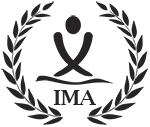Choosing the Right Massage Table: Considerations for Therapists and Clients
In connection with the IMA’s many Massage Masterclasses all over the World we are often asked for recommendations of massage tables and asked which to choose. It developed into this article with several good advice and considerations.
When it comes to massage therapy, the choice of massage table is crucial. The right table can enhance the effectiveness of various massage techniques while ensuring ergonomic comfort for both the therapist and the client. This article explores different types of massage tables, their advantages and disadvantages, and how they align with various massage methods. Lets begin with the diffrent Types of Massage Tables.
Portable Massage Tables
Description: Lightweight and collapsible, these tables are designed for therapists on the go.
Advantages:
• Easy to transport and store.
• Versatile for home visits, events, and mobile practices.
• Generally, less expensive than stationary tables.
Disadvantages:
• May not be as sturdy or stable as fixed tables.
• Limited weight capacity.
• Often less customizable in terms of height and adjustments.
Stationary Massage Tables
Description: These are fixed tables often used in spas, clinics, or studios.
Advantages:
• More durable and stable, providing a solid surface for deep tissue work.
• Usually come with a variety of customization options (height, padding, etc.).
• Can accommodate larger clients with higher weight capacities.
Disadvantages:
• Less portable and requires more space.
• Typically, more expensive than portable tables.
Electric or Hydraulic Massage Tables
Description: These tables have adjustable heights, allowing therapists to raise or lower the table with ease.
Advantages:
• Enhances ergonomics for therapists by allowing adjustments to their preferred working height.
• Facilitates easier transitions for clients, especially those with mobility issues.
• Can improve access for treatments requiring different angles or positions.
Disadvantages:
• Higher cost compared to standard tables.
• Heavier and less portable.
• Potential for mechanical issues over time.
Specialty Massage Tables
Description: Tables designed for specific modalities, such as prenatal massage, lymphatic drainage, or physical therapy.
Advantages:
• Tailored features (e.g., cutouts for pregnant clients, additional padding) enhance client comfort.
• Can optimize techniques specific to a treatment method.
Disadvantages:
• Often more expensive due to specialized design.
• Limited versatility for general massage practices.
Ergonomic Considerations
For both therapists and clients, ergonomics play a critical role in the effectiveness and comfort of a massage session.
For Therapists:
• Table Height: The right height is essential to prevent strain on the back and shoulders. Ideally, the therapist should be able to maintain a neutral spine while working.
• Stability: A stable table allows the therapist to apply pressure without worrying about the table shifting, enhancing both safety and comfort.
• Weight Capacity: Ensuring the table can support various client weights is vital for the therapist’s peace of mind and the client’s safety.
For Clients:
• Comfort: Adequate padding and support are essential for client comfort, especially during longer sessions.
• Accessibility: Tables that can be adjusted in height help clients with mobility issues or those who may struggle to get onto a standard table.
• Positioning: The design of the table should allow for various body positions to accommodate different massage techniques and client needs.
Conclusion
Selecting the right massage table is a crucial decision that impacts the quality of therapy provided. By considering the type of massage being performed, the ergonomics for both therapist and client, and the specific needs of their practice, therapists can choose a table that enhances their effectiveness and ensures client satisfaction. Whether opting for a portable, stationary, electric, or specialty table, understanding the advantages and disadvantages of each type will lead to a more successful massage therapy experience.
- Article by Jeppe Tengbjerg (CEO The International Massage Association)
Did you like the article? Or did you like taking part of the World Championship in Massage or one of our classes, then please feel free to give us a nice review on Google.

At the International Massage Association we are ongoing try to elevate the Massage Profession via our many Articles, Podcasts, Masterclasses and via the Educational Conference at the World Championship in Massage
Please follow the IMA Social Medias and read more articles and watch amazing videos: Facebook, Instagram, Youtube, TikTok, Telegram Channel, Whatsapp Channel, Threads, X, Linkedin




